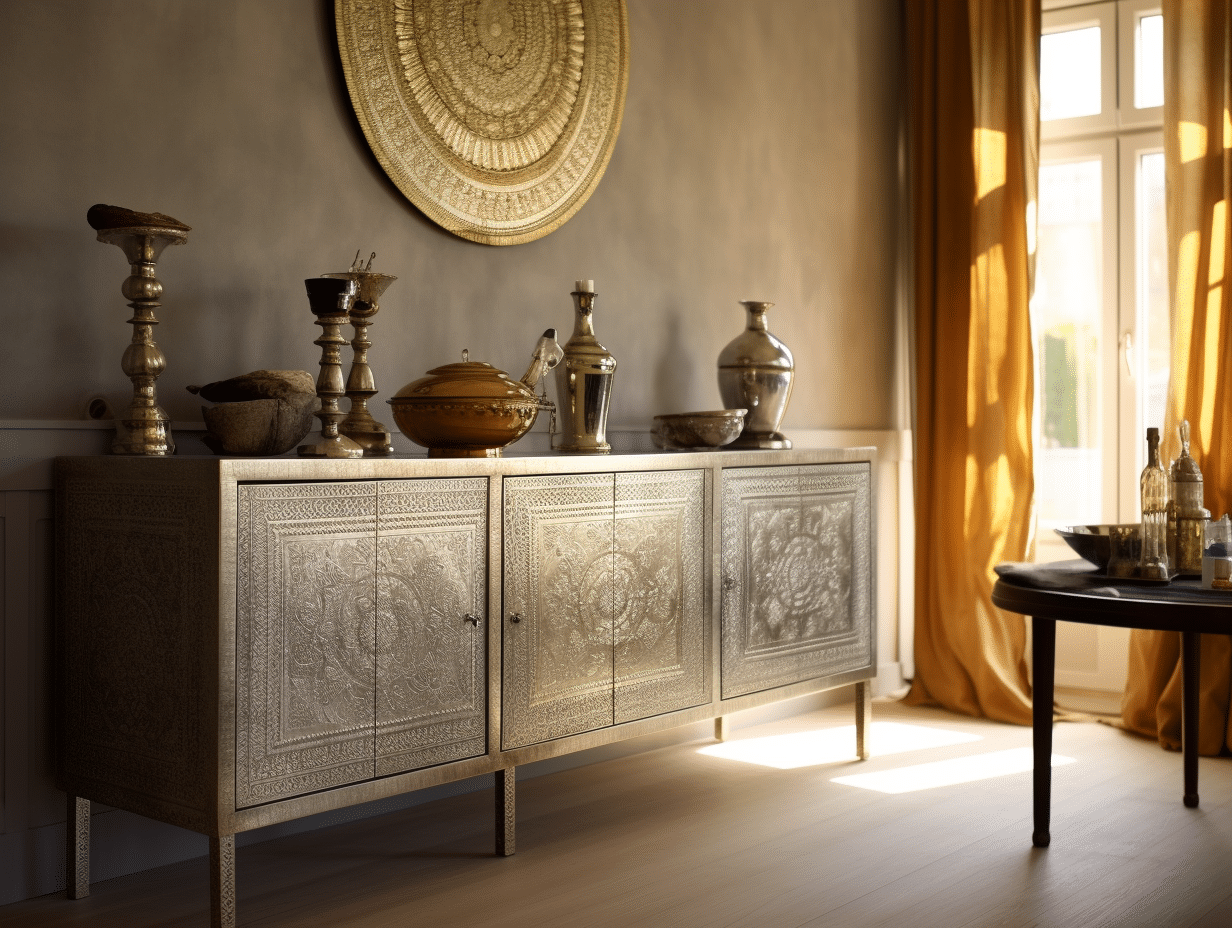From iron to aluminum to stainless steel, the allure of furniture forged from various metals endures, captivating those who appreciate durability, structure, and aesthetic appeal. Contrary to its modern popularity, metal furniture boasts a rich history spanning centuries. A 1996 historical account even recounted the use of an iron chair in ancient Roman times, underscoring the longevity of its existence.
In the medieval era, metal gained favor as a material for bedframes. Given the dampness of bedrooms draped in tapestries, the resilience of metal ensured that beds remained impervious to both moisture and the pests that frequented these spaces.
The inaugural piece of documented metal furniture emerged in 1820—a round, three-legged cast iron table conceived by German designer Karl Friedrich Schinkel. Its distinctive ‘lion paw’ feet later found a place in the cast iron benches that earned Schinkel global acclaim.
The 1830s witnessed a surge in iron’s popularity, driven by its widespread use in railway construction. This newfound ubiquity extended to furniture, particularly in gardens and outdoor settings. Birmingham, in the 1840s, earned renown for its metal furniture industry through the Coalbrookedale Company, while Vienna saw the establishment of August Kitschelt’s factory specializing in tubular iron furniture.
Cast iron’s ascendancy persisted until the advent of the Art Nouveau period, marked by a disdain for mass production. The early 20th century, however, witnessed a revival led by designers like Marcel Breuer, Mart Stam, and Ludwig Mies van der Rohe, who embraced metal in various forms. It wasn’t until the 1950s, with the advent of Charles Eames and Harry Bertoia, that metal furniture truly achieved mainstream recognition—a popularity that endures to this day.
In contemporary times, three primary metal choices dominate the furniture landscape. Cast iron, prized for its weight in outdoor settings, requires proper waterproofing due to its susceptibility to rust. Aluminum, lightweight and rust-resistant, is a preferred option for both indoor and outdoor furniture. Meanwhile, steel, known for its strength and low maintenance, remains a staple for numerous furniture manufacturers.
Advancements in manufacturing processes have transformed metal furniture production. While the early days relied on meticulous handcrafting, today’s sophisticated machinery allows for the creation of high-quality metal furniture pieces catering to diverse tastes, all with a swift turnaround. Vietcast practices high-quality precision engineering processes to craft a diverse range of metal furniture tailored to your specifications. Whether you seek a distinctive, one-of-a-kind piece or a larger production order, we are committed to meeting your metal furniture requirements promptly and within your budget. Reach out to us to discover how Vietcast can assist you.
Content Edited: Sophia Nguyen – Marketing Staff
Image Sourced: Iris Furnishing


YOUR COMMENT